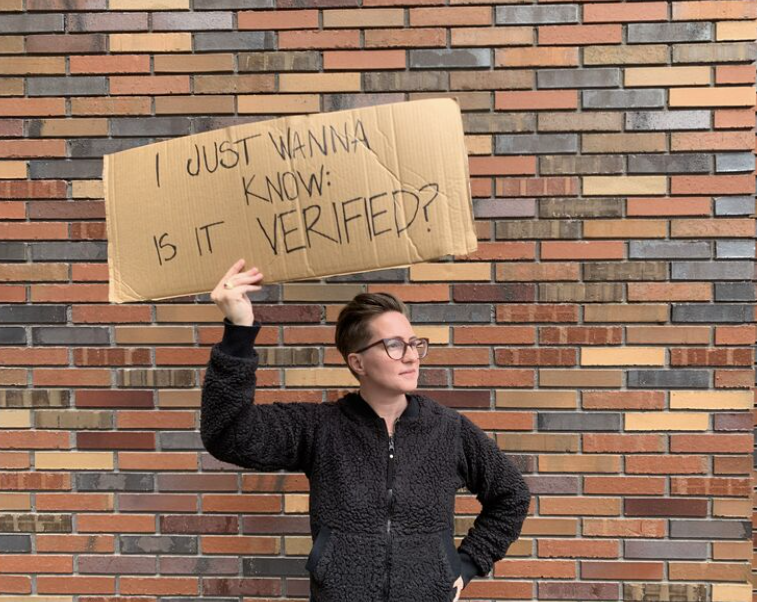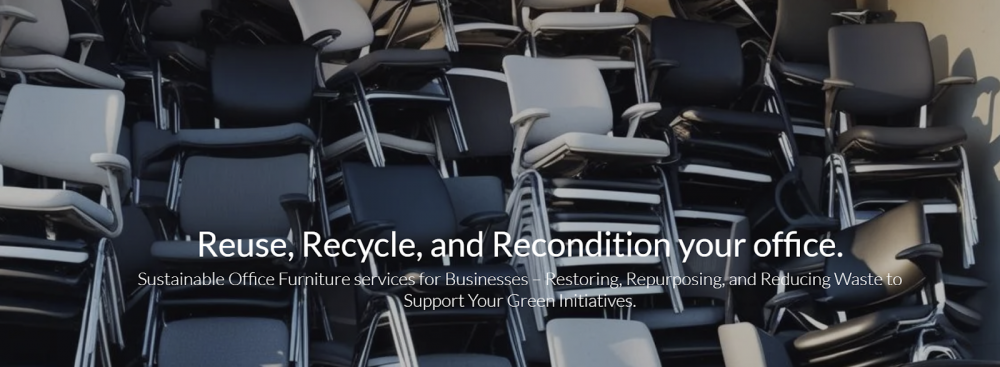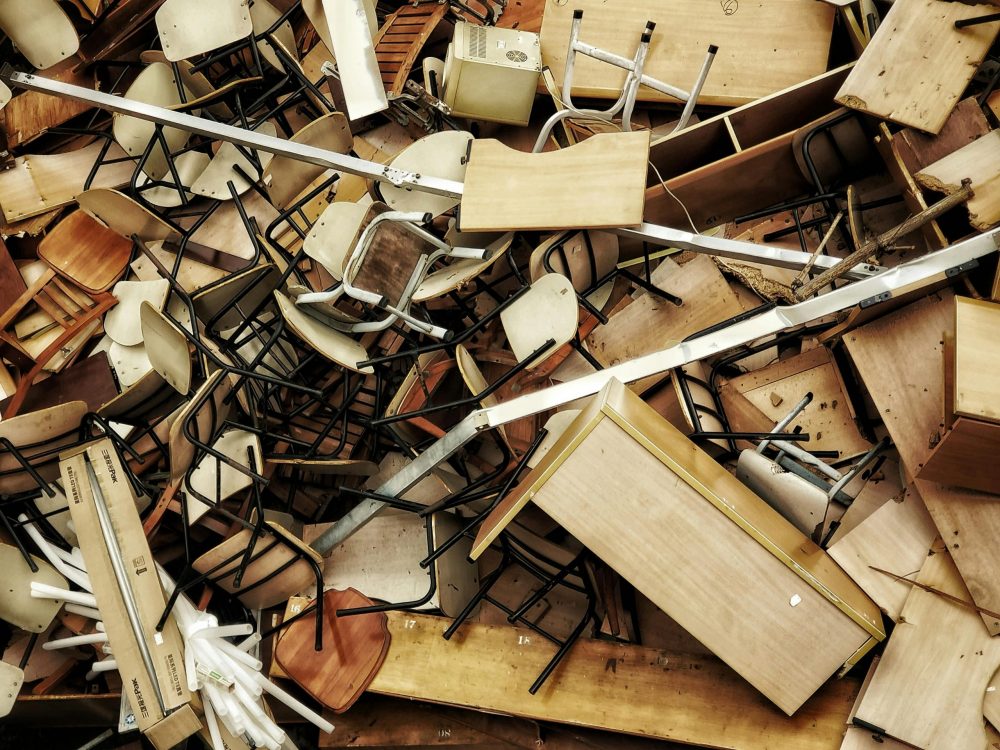Circular Economy Editor, Cynthia Milota, connected Brandi Susewitz, Founder and CEO of RESEAT, the furniture asset management service that makes second life furniture inventory sustainable, smart and impactful for office needs.
RESEAT‘s SaaS (software as a service) platform is redefining how companies track, repurpose and resell office furniture, creating a seamless second-life marketplace that prioritizes circularity, sustainability and efficiency.
Too often, businesses focus only on the future of their new space, leaving valuable furniture assets behind as an afterthought, forcing last minute removals, rushed broker deals or unnecessary landfill contribution. Bringing RESEAT into the project process earlier when the furniture procurement is being negotiated will eliminate the dreaded decommissioning conversation, where clients are paying to have furniture removed and disposed.

By working with furniture dealers at the outset, this little bit of forethought can end a lot of waste.
– Brandi Susewitz
Let’s check in with Brandi and their movement to make sustainable office furniture management the new standard.
WDM: Since the last time we chatted, RESEAT has engaged with a number of major US furniture dealers. Tell us how these partnerships have expanded your reach and impact.
Brandi Susewitz: I think engaging with dealers has significantly expanded our reach and impact in six impactful ways.
Built-in Trust & Relationships. Furniture dealers already have strong, long-standing relationships with end users. By engaging them, RESEAT tapped into existing trust networks, accelerating adoption and credibility. Dealers introducing RESEAT to their customers made the conversation about sustainability and asset management much more seamless.
National / Global Footprint. As more dealers adopt RESEAT’s platform-including the new white-label option, they bring their entire book of business with them. This multiplies RESEAT’s presence in every region they serve, creating a web of circularity across the country and internationally.
More Furniture Diverted from Landfill. With dealers onboard, we’re getting early access to more furniture projects which means we can step in before furniture is discarded.
RESEAT helping divert over 12 million pounds of office furniture from the landfill since 2020.
Lifecycle Planning at the Point of Purchase. Dealers are now offering RESEAT as part of the sale, helping customers plan for what happens to their furniture before it’s even delivered. This not only future-proofs the project but embeds circular thinking into the very start of the lifecycle.
Revenue Growth & Long Term Partnerships. Working with dealers has turned RESEAT into more than a resale platform, it’s now a full lifecycle solution. With white-labeled tools, ongoing subscription revenue, and stronger dealer-customer engagement, RESEAT’s business model has evolved into a recurring, scalable ecosystem.
Marketing Momentum. Every dealer becomes an amplifier. Whether it’s participating in campaigns like The Cardboard Truth or sharing success stories with their clients, each one helps RESEAT tell a bigger story and push the industry toward smarter, more sustainable practices.

WDM: We understand that RESEAT now has a significant alliance with a large UK rep group to further your circular mission abroad. Please share details.
Brandi Susewitz: Yes, we are proud to have solidified a partnership with Encore by Welltek who is a well-respected rep group in the UK that works with about 100 dealers in the surrounding areas. This partnership marks a significant step in bringing RESEAT’s inventory management and resale platform to the UK market. Empowering dealers, designers, and manufacturers to track, manage, resell, and renew commercial furniture across its full lifecycle.

The UK design community is eager for real, actionable circularity, not just pledges. Our rep group partner brings deep regional knowledge and long-standing relationships with dealers and end users alike. Together, we’ll enable furniture dealers to offer RESEAT’s white-label platform, giving their customers a way to plan smarter from the point of purchase and avoid waste at the end of use.
WDM: There’s a misnomer out there that furniture dealers are not monetarily incentivized to offer second-life furniture rather than new products. Please bust that myth for our readers.
Brandi Susewitz: When I started in the industry in 1997, dealers were earning about a 35% gross profit margin. By the time I left the dealership side in 2000, that had already dropped to 22% — and that was considered good. Margins on new furniture have continued to compress over the years, while costs to serve customers have only gone up.
We give dealers new revenue opportunities that didn’t exist before:
SaaS Revenue – Dealers can now white-label our inventory management platform and charge their customers for access, creating a steady, recurring revenue stream.
Second-Life Sales – Instead of walking away from decommissioned furniture, dealers can now help clients resell it — and share in that resale value. Second life furniture sales generate more income than selling new!
Lifecycle Planning – By embedding RESEAT at the point of purchase, dealers deepen client relationships and stay involved far beyond the initial sale.
It’s about giving dealers tools to future-proof their business, better serve clients, and participate meaningfully in the circular economy, while boosting their bottom line.
This is not about replacing new product sales — it’s about expanding the pie.
RESEAT’s Digital Product Passport, which enables organizations to track, resell, refurbish or recycle assets efficiently.

WDM: When we spoke, you mentioned that “end users understand” the RESEAT proposition of extending the furniture lifecycle. Could you elaborate on that?
Brandi Susewitz: Yes, when we say that “end users understand” the RESEAT proposition, we mean that today’s clients are far more aware of the environmental and financial impact of their furniture decisions than ever before.
They understand that extending the lifecycle of furniture isn’t just about sustainability, it’s also smart business.
They have lived through costly decommissions.
End users know what it feels like to be stuck with a warehouse full of used furniture and no plan. They get the value of having a proactive strategy, whether it’s resale, donation, or refurbishment, built in from the start.
They want to meet their ESG goals.
Companies are under pressure to report on carbon emissions and demonstrate responsible resource use. The ability to track, renew, and resell furniture through RESEAT gives them tangible, reportable wins.
They see the financial upside.
RESEAT allows clients to capture value from assets they would otherwise pay to dispose of. Many customers are surprised to learn how much resale or refurbishment can offset the cost of future projects.
They’re seeking better systems.
End users don’t want last-minute scrambles anymore. They want an organized, digital, and transparent way to manage their assets over time and RESEAT delivers exactly that.

WDM: Part of your marketing story is to “think about the end in the beginning.” What specific strategies can our audience use to put this into practice?
Brandi Susewitz: Some specific strategies that your audience can use would be:
Create a digital furniture inventory from day one. RESEAT captures the order details from the dealer using the electronic file they use to place the order with the manufacturer. We upload it into our platform and generate a digital catalog of the customers’ furniture. Don’t wait until decommission. Use this as an excuse to reach out to your customers and engage them in a conversation because they do need help with this process and you could be looked at as a trusted advisor instead of a “sales person.”
Include end of life planning in the procurement process.
Set Internal Policies for furniture lifecycle decisions. Establish clear criteria for what stays, what gets refinished, what is getting sold and/or donated. Having this framework already in place avoids the last-minute panic and landfill dumps when space is downsized or reconfigured.
Make Second Life furniture part of the initial spec.
Use RESEAT as an ongoing Resource. Thinking about the end in the beginning means you’re not just designing a space, you’re designing a strategy as well!

WDM: Can you provide some current statistics for how much US office furniture ends up in landfills every year?
Brandi Susewitz: 12 MILLION TONS of furniture waste is generated in the US annually according to the EPA. Over 80% of that waste ends up in the landfill and less than 5% is actually recycled and an even smaller portion is reused or repurposed.
By partnering with RESEAT, furniture dealers can offer enterprise clients a unique differentiator: a comprehensive, sustainable furniture lifecycle management solution. Implementing RESEAT’s platform not only meets the growing demand for sustainable practices but also positions dealers as forward-thinking partners, fostering stronger, long-term relationships with enterprise clients.
Interested in differentiating your dealership and becoming a Preferred RESEAT dealer? Reach out to [email protected] and schedule a demo call!
This article was created in collaboration with RESEAT. Images courtesy of RESEAT unless otherwise noted.


